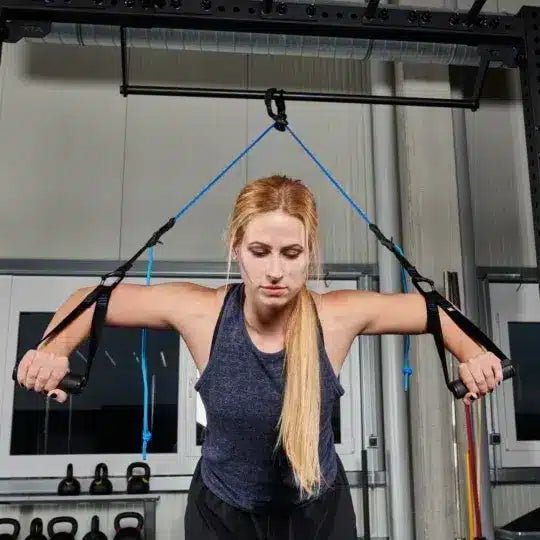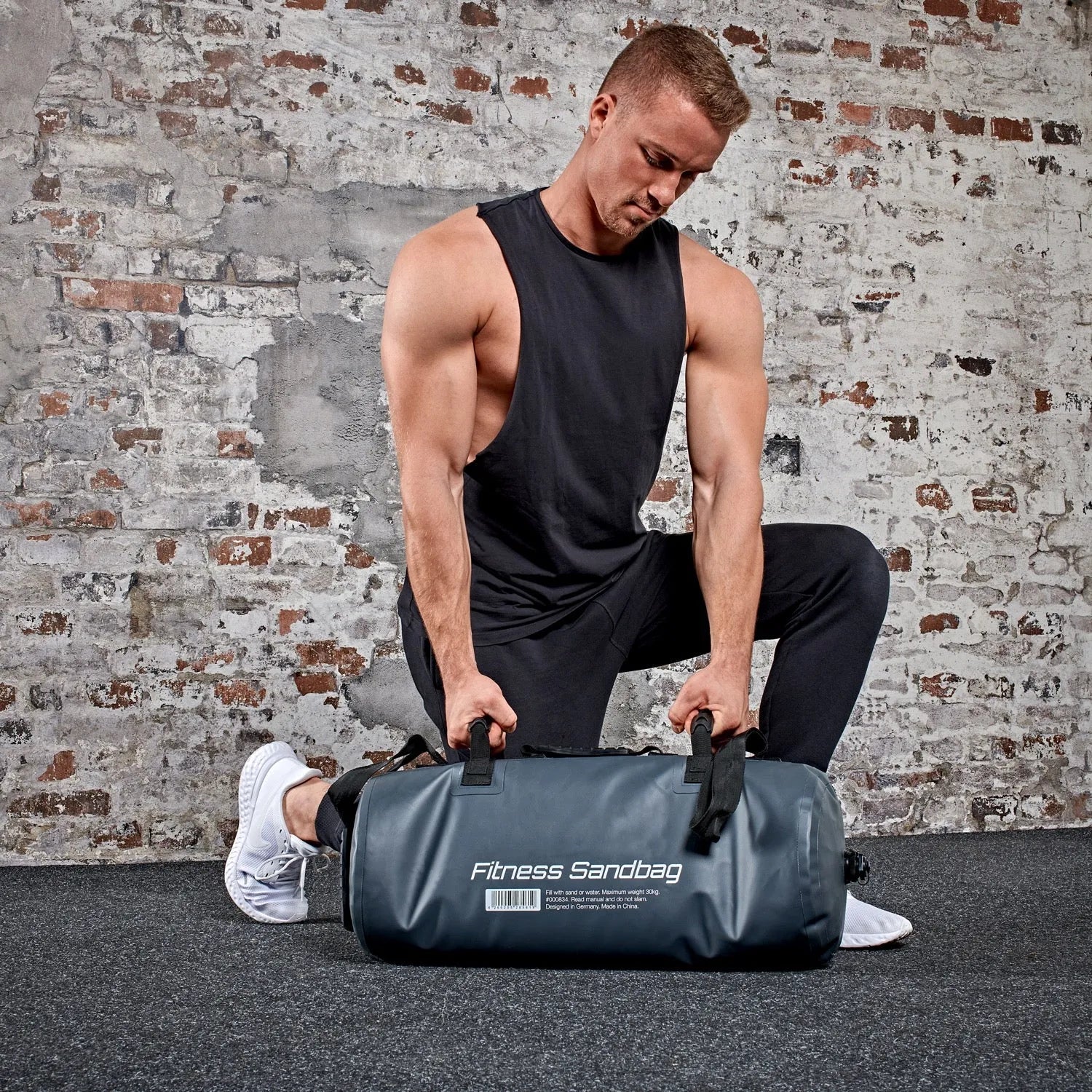You play soccer, attend aerobics classes, spend time on the bike or stepper – in short: you are always in motion? Try some static exercises to balance it out! Don’t worry: they may not look exciting, but they are definitely more strenuous and effective than you might think. It’s not for nothing that even professional athletes swear by plank and co!
What exactly are isometric exercises?
The term isometrics originates from ancient Greek. Composed of the präfix “isos“ for equal and the noun „metron“ for measure. So it represents the adherence to an identical length extension. You may have heard strength athletes talk about isometric tension exercises at the gym
Or maybe you’ve wondered what a workout can look like without barbells or big machines? The answer is simple, the static exercises with sandbags, powerband or sling trainer are just as effective: isometric training will keep you engaged even without pulling or pushing movements. Or better yet, get you out of breath.
Many are first introduced to them in physical therapy
Most people are more familiar with isometric exercises in physiotherapy. The purpose of these exercises is clearly to make the muscles ready for everyday life again. Are you wondering what makes isometric exercises suitable for sports as well?
Here’s a little more detail: most sports activities involve movement sequences in which you contract and release selected muscle groups. In isometric training, on the other hand, you keep your muscles contracted for the entire duration of the exercise. And you do this in such a way that they neither shorten nor lengthen. This makes the exercises even more challenging!
The opposite of isometric tension exercises are dynamic exercises – often performed with free weights or a larger machine during strength training. You alternate between concentric and eccentric movements, i.e. the contraction and subsequent relaxation of your muscles.
By the way, you can also combine isometric tension exercises with dynamic strength exercises. For example, by lifting weights and holding them motionless in the identical position for a few seconds before lowering them.
What are the benefits of isometric exercises?
There are good reasons why even professional athletes have not only eccentric but also isometric üexercises on their daily schedule:
- You’ll strengthen your core stability and increase your maximum strength
- You stress your cardiovascular system and improve your endurance
- You’ll be mentally focused and ensure faster muscle growth
- You increase your grip strength and reduce the risk of injury
Caution: too much one-sided isometric training also has disadvantages
With all that said, there are also a few things you should be careful of when doing isometric exercises. In order for you to benefit 100 percent from the workout. This way you train specific muscle groups completely isolated. Therefore, integrate isometric exercises into your workout plan, but still focus on activities with an interaction of different body areas. Also, never hold your breath during exercise, otherwise your circulation will suffer from oxygen deprivation.
Huge range of available isometric exercises
The best-known isometric exercise is probably the lower arm plank. With it, you train both your superficial and deep core muscles Your core will be strengthened and subsequently help you with strength exercises like squats or bench presses.
In addition to your own body weight, sling trainers and powerbands can be used wonderfully as an addition. Powerbands, in particular, help to better scale the intensity. The instability that the sling trainer creates provides an additional balancing challenge. In addition, the load of your own bodyweight can be better dosed with it. With them you can perform the isometric exercises also as an absolute beginner correctly but also challange yourself more as an advanced athlete
Generally, isometric exercises are divided into the following categories:
- Holding: Holding the same body position for as long as possible is the focus
- Yielding: This is where you use an extra weight after all. As soon as you cannot hold the position anymore, an additional (eccentric) stretching of your muscles follows.
- Overcome: Ever tried to move an fixed resistance under max effort ?
With time, you can take it a step further and move from the basic Plank position into a one-armed side plank. Alternatively, the back exercise Superman or the squat pressed against a wall are popular. But always make sure that you perform it properly! Rather keep your position shorter and don’t compromise on technique.
As soon as the exercises with your own body weight no longer challenge you, you can integrate kettlebells and weight vests into the training. So you see: there’s always room for improvement in isometric training, too!
Who benefits from isometric training?
Beginners and seasoned pros alike benefit from isometric training, as do rehab patients: The body-tensioning exercises are often used specifically after sports injuries. Include the workout in your regular sports program as a supplement. You will soon notice progress in your core stability and strength and endurance.
There’s more to consider
If you also do without the classic strength training with heavy weights during isometric Übungen exercises, they are no less strenuous! Therefore, give your muscles enough time to recover. And give them the oxygen they need during the exercise by breathing evenly.
Last but not least: Have patience! No master has fallen from the sky yet. But in the end, you will manage to hold Plank and Co. for minutes!



Leave a comment
All comments are moderated before being published.
This site is protected by hCaptcha and the hCaptcha Privacy Policy and Terms of Service apply.